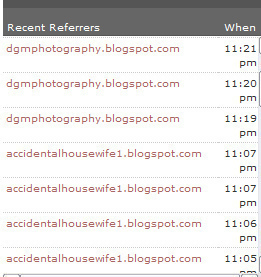Referrer Spam
When a user follows a link from WebSite A to WebSite B, it generates a logfile entry in the web server logs of WebSite B.
Most webmasters use a web site statistics reporting tool such as AWStats or Webalizer. Some webmasters (either purposefully or unintentionally) make the reports generated by these tools publicly available.
One of the reports generated by most web site statistics reporting tools is a “top referrers” report. This reports lists the remote web pages that have sent the most visitors to the web site.
How are referrers used to spam?
In most web site statistics reporting tools, each top referrer is listed with a link.
That link becomes a back-link to the top referring page.
Some unscrupulous webmasters create phony requests of other web pages, just to get a spot in the top referrers list.
This technique is utilized to artificially boost Page Rank.
Unfortunately, this technique has several negative consequences:
- It uses resources (bandwidth, disk space, CPU cycles, etc…) of the “victim” web site.
- It fills the log files of the victim website with trash, making them useless for statistical analysis.
- It “steals” back-links from the actual top referrers.
Preventing referrer spam
The easiest method to avoid becoming a target of referrer spam is to not publish your web site statistics publicly.
If you wish to publish your web site statistics publicly, you can manually ban web sites which use you for referrer spam.
If you have already been a victim of referrer spam, there are tools available to clean the spam entries from your web server log files. One such tool is Referrer Spam Fucker 3000.


Comments - No Responses to “Referrer Spam”
Sorry but comments are closed at this time.